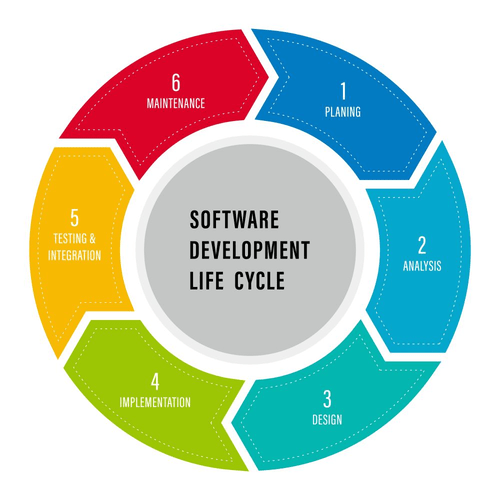Assigning specific roles and responsibilities streamlines the approval gates and release process. GitLab CI/CD helps developers analyze code complexity and quality to promote conciseness and minimal maintenance. It also checks for known vulnerabilities with dependency and container scanning, plus security test reports that spot unauthorized access, data leaks, etc.
- The estimation is based on the duration of the previous successful build.
- Alerts can also automatically trigger ChatOps and email messages to appropriate individuals or groups.
- Since templates are also modular, teams have the option to pull in only the parts they need.
- Failure at any stage triggers a notification to alert the engineer responsible.
- This page is an auditable sequence of changes that have been applied to the production environment.
CI/CD pipelines during this time were prone to breaking, lacked visibility, and were difficult to change. Tune in below to see GitLab’s continuous delivery solution in action. These dashboards help you preempt out-of-compliance scenarios to avoid penalties. They also streamline audits, provide an opportunity to optimize cost, and lower risk of unscheduled production outages.
Viewing performance metrics
In any case, I recommend reading GitLab’s excellent documentation to read up on these log files and the information included in them before commencing. The Filebeat configurations provided below are designed for shipping the following logs. Run your own Functions-as-a-Service (FaaS) using GitLab Serverless. Functions and even container-based applications can be easily deployed that auto-scale up to meet demand then down to zero when there’s no usage. While we stress the importance of having a single source of truth, we realized that when it came to learning about GitLab, there were almost too many places to look. We have GitLab University, our official GitLab and GitLab Unfiltered YouTube pages where we regularly upload educational content, and of course, the docs.

I’ve just disabled them and enable my own runner and everything started to work as expected. You can check this in CI / CD Settings, I think they are enabled by default. Basically , pipelines are nothing more than a trigger for the runner…
Quick Glossary: Cloud Platform Services
To make it easier to understand the flow of a pipeline, GitLab has pipeline graphs for viewing pipelines
and their statuses. Alternatively, if you are using Git 2.10 or later, use the ci.skip Git push gitlab pipeline monitoring option. For a list of configuration options in the CI pipeline file, see the GitLab CI/CD Pipeline Configuration Reference. If all jobs in a stage succeed, the pipeline moves on to the next stage.

To be successful with DevOps, teams must use automation, and CI/CD pipelines are a big part of that journey. At its most basic level, a pipeline gets code from point A to point B. The quicker and more efficient the pipeline is, the better it will accomplish this task. All these dashboards offer operations insights that are necessary to understand how a release is performing in production and quickly identify and troubleshoot any production issues.
Beautifying our UI: Giving GitLab build features a fresh look
The exporter job has a number of configurable options which are provided as CI/CD environment variables. Ensure that the rule is set to always so that the exporter runs even if previous jobs fail. The next image shows GitLab resources as log events with the configured attributes.
Again, this list fails to capture how many tools are actually out there. There are more CI tools, but I wanted to keep the list short with the tools I’ve personally used. Access is granted to only those whom need access to production through bastion hosts.
How do I set up a GitLab CI/CD pipeline?
In my case, I had made a typo on the filename and had forgotten to add a dot before it. Compared to email notifications, CatLight saves your time by focusing on the current state,
and not the history of changes. Once you pick one of those on-premises plans, you must choose your number of build agents.

Select the Distributed Traces tab and confirm that you can see a trace for your pipeline. In today’s fast-paced tech world, development teams need to be able to work simultaneously on different elements of an app. If engineers have to wait until merge day to integrate changes back to the main branch, the resulting work is time-consuming, labor-intensive and, frankly, mind-numbing. Because everyone’s making changes in isolation, conflicts with other team members can occur. Automated pipelines can help prevent errors that result from manual processes, allow for rapid product iterations, and provide consistent feedback during the development process. Each step of a CI/CD pipeline is a subset of tasks grouped into pipeline stages, which we discuss in detail further down in this article.
Deploy
We hope this blog post gives you some insight into how we approach pipeline as code and our larger vision for how we’re improving the CI/CD pipeline experience in the future. Automated pipelines increase development speed and improve code quality, and we’re actively working on making them even better and easier to use. A user account on a GitLab instance with an enabled container registry. The free plan of the official GitLab instance meets the requirements.
Unlike other Prometheus exporters, to access
the metrics, the client IP address must be explicitly allowed. The performance data collected by Prometheus can be viewed directly in the
Prometheus console, or through a compatible dashboard tool. The Prometheus interface provides a flexible query language
to work with the collected data where you can visualize the output. For a more fully featured dashboard, Grafana can be used and has
official support for Prometheus.
Monitor GitLab pipelines with New Relic, making it easier to get observability into your CI/CD pipeline health and performance.
Those are other considerations, along with community size, support, reliability, scalability and customizability. Some standard features to look for include automated builds/testing, deployment automation, monitoring, reporting, code quality, artifact management and third-party integrations. Developers who put a premium on performance and scalability can get just that thanks to Jenkins’ distributed architecture. Continuous integration, continuous delivery, and continuous deployment streamline the process of combining work from separate teams into a cohesive product. CI/CD provides a single repository for storing work and consistently automates integration and continuous testing. Keep reading to discover the answers and find out more about the benefits of CI/CD pipelines for engineers and enterprises.
